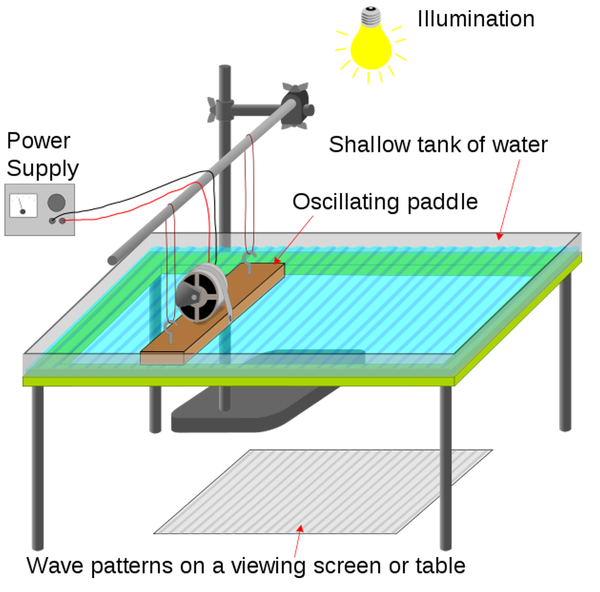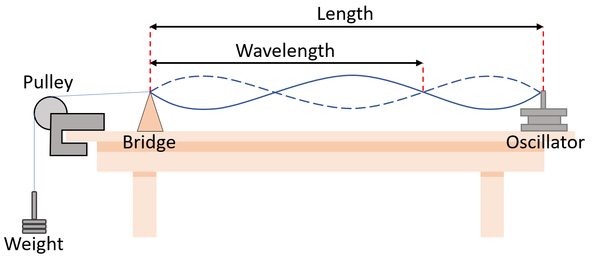Difference between revisions of "GCSE Physics Required Practical: Investigating Mechanical Waves"
(→Experiment 2: Waves on a String) |
(→Method) |
||
| Line 30: | Line 30: | ||
{| class="wikitable" | {| class="wikitable" | ||
|- | |- | ||
| − | |[[File:StringWave.png|center| | + | |[[File:StringWave.png|center|600px]] |
|- | |- | ||
| style="height:20px; width:200px; text-align:center;" |A [[diagram]] of the [[apparatus]] used to investigate the features of a [[Waves on a String|wave on a string]]. | | style="height:20px; width:200px; text-align:center;" |A [[diagram]] of the [[apparatus]] used to investigate the features of a [[Waves on a String|wave on a string]]. | ||
Revision as of 11:18, 20 March 2019
Contents
Key Stage 4
Meaning
Investigate the features of mechanical waves.
Experiment 1: Ripple Tank
Method
| A diagram of the apparatus used to investigate the features of mechanical waves. |
- Set up the equipment as shown in the diagram.
- Count the number of waves that pass a given point over 10 seconds.
- Divide the number of waves by the 10 seconds to find the frequency of the waves.
- Measure the length of the ripple tank from paddle to end using a ruler.
- Use a stopwatch to time how long it takes for a wave to travel this displacement.
- Use the equation \(v=\frac{s}{t}\) to find the velocity of the wave.
- Use the equation \(v=f \lambda\) to find the wavelength of the wave.
Improving Accuracy
- Count the number of waves over a greater period of time greater than 10 seconds to reduce the effect of human error on the frequency.
Improving Precision
- Counting the number of waves over a greater period of time greater than 10 seconds will create an average of the frequency over more waves and therefore increasing the precision.
Experiment 2: Waves on a String
Method
| A diagram of the apparatus used to investigate the features of a wave on a string. |
- Set up the equipment as shown in the diagram.
- Adjust the frequency of the oscillator until it produces a clear wave on the string.
- Record the frequency of the oscillator.
- Measure the wavelength of the wave using a ruler.
- Use the equation \(v=f \lambda\) to find the wavespeed of the wave.
- Repeat for different 5 frequencies of the wave.
Improving Precision
- Calculate an average for the wave speed over a greater number of results to reduce the effect of random errors, improving the precision.

